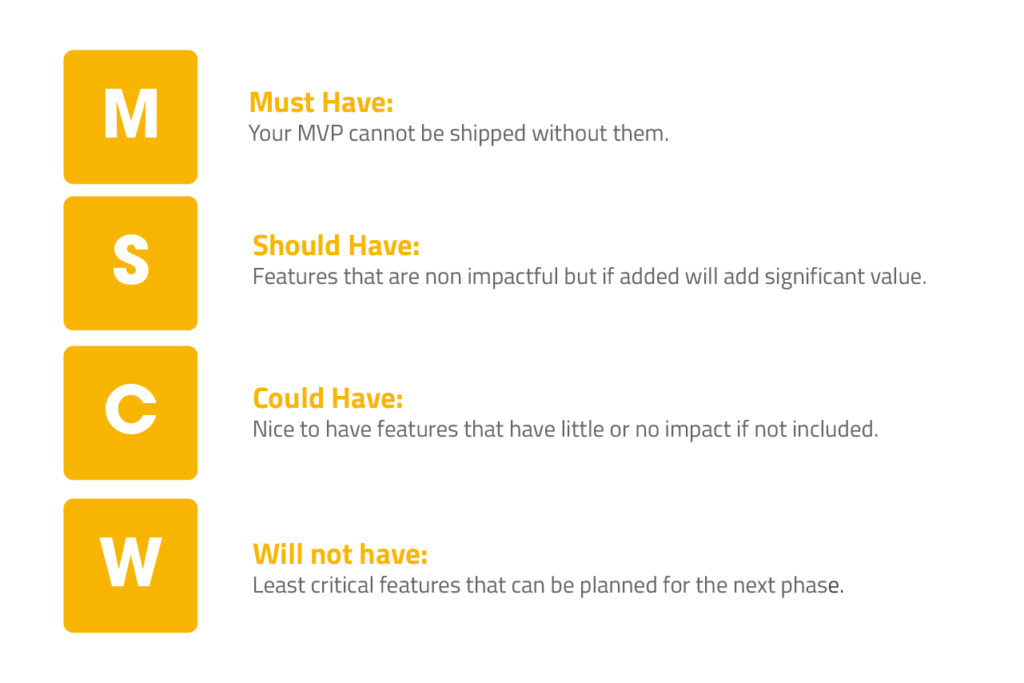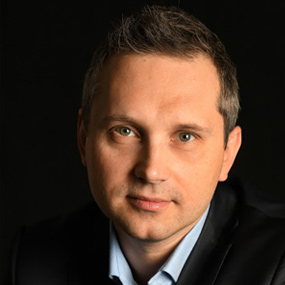MVP – How To Start?
13 januar 2021
The term MVP is an acronym for Minimum Viable Product. This is the very first version of the product, which has the functionality that can satisfy the basic needs of potential clients. It also allows gathering and analysing the feedback related to it. But the key thing is that MVP should be realized with the least effort and the engagement of minimum resources.
So, if you have something more than an idea… let’s call it a “concept” of a new product and you would like to realize it, starting with MVP is certainly one of the options you should consider. How to start then?
Define functionalities and the scope of the MVP
In order to build MVP you need to meet some needs of potential users. It is worth considering to conduct a survey (or other method) at an early stage to determine how these potential users would like to use the future product. What is really important to them? And what is the most important? If you cannot or do not want to carry out such research you have to do this work yourself.
On this basis, an initial list of functionalities will be created, which should be then supplemented with all the requirements that the respondents (or you) did not think about but are necessary for the product to work properly. I mean, for example:
- user and authorization management,
- system administration layer,
- non-functional requirements (RWD, browsers on which system is to operate, security? Speed of operation? etc.),
- validation of entered data,
- and probably many more.
The list created in this way (e.g. in excel spreadsheet) should be then verified to determine what is really needed in the MVP. And here some problems appear because at this stage it is really difficult to say what is needed in the MVP and what is not.
One of the selected prioritization methods can be used to answer this question. There are at least a few of them:
- KANO Model,
- Feature Priority Matrix,
- RICE scoring,
- MoSCoW Prioritization.
And the last one I recommend the most. What MoSCoW stands for? It’s super easy… MoSCoW prioritization is a prioritization framework for managing requirements, features, tasks, etc.
It is used to help to understand the significance of requirements in a specific release. The MoSCoW method helps to break down all potential MVP features into 4 major categories:
- Must-haves (M),
- Should-haves (S),
- Could-haves (C),
- Will not have (W).

Of course, all the elements of Must Have should be included in the MVP. And the rest? It all depends on you and the information you will get in the next chapter.
Estimate the MVP development cost
After all, you do not have an infinite budget, and if you had, you would not read this article, but you would have hired an army of software developers who would transform coffee into source code.
You need to know the cost of making the MVP! It’s good if you manage to evaluate the implementation of each item on the list, regardless of the priority assigned to it. Valuation can be either labor-intensive if you plan to do MVP in-house or cost-intensive if you want to outsource it. For a clear conscience, ask for a quote from at least 2 external contractors.
Estimation and choosing a proper software development company are complex tasks which are better described in our previous articles.
Verify the MVP scope with costs
Here the difficult moment comes. You have received a quote (or maybe 2) and you are still wondering why they are so expensive. Nevertheless, the work you have to do is to decide which items will ultimately end up in the MVP and which will not. Knowing the priority and cost, you have to decide what will actually be included in the first version of the product.
At this stage, I also propose to determine initially what will possibly be next in the queue for implementation if the MVP turns out to be successful. Giving this information to the system development team can help them to be better prepared for it.
Plan the MVP implementation
Before proceeding with the implementation of such defined MVP it is necessary to prepare the implementation schedule. If you intend to make an in-house product think about it and work with your team on a detailed action plan spread over time. Think not only about the positive path, but also about the difficulties that may arise in the course of implementation and try to include them in your schedule as well.
If you are going to choose an external software development company to provide the MVP make sure it prepares a schedule and then verify it precisely.
Plan your next steps
A good idea at this stage is at least to do a preliminary analysis of what will happen when the MVP is created.
You have to think about how to get the first customers or users. You should also figure out how the feedback will be collected. Maybe they will need to be additionally encouraged to share their opinions and comments.
It may also turn out that the MVP will be incomplete. So the prioritization of elements to be performed was wrong and the product needs to be expanded. Therefore, it is good to consider the possible allocation of some reserve budget for such a possibility.
Summary
Although the MVP should be very simple, in fact as simple as possible, its implementation can be problematic. Therefore, it is worth preparing for it and thinking carefully about the above issues. The key is to analyze the requirements at the very beginning and collect feedback – at the end.
In Evertop, we have been creating for many years all kinds of projects, systems and applications. Many of them started their lives from the MVP phase, which is why we have a lot of experience in this area. If you would like to talk about the implementation of your product and use our knowledge – write directly to me at: mkotok@evertop.pl or use the contact form. We would be happy to talk to you during a free consultation meeting.





